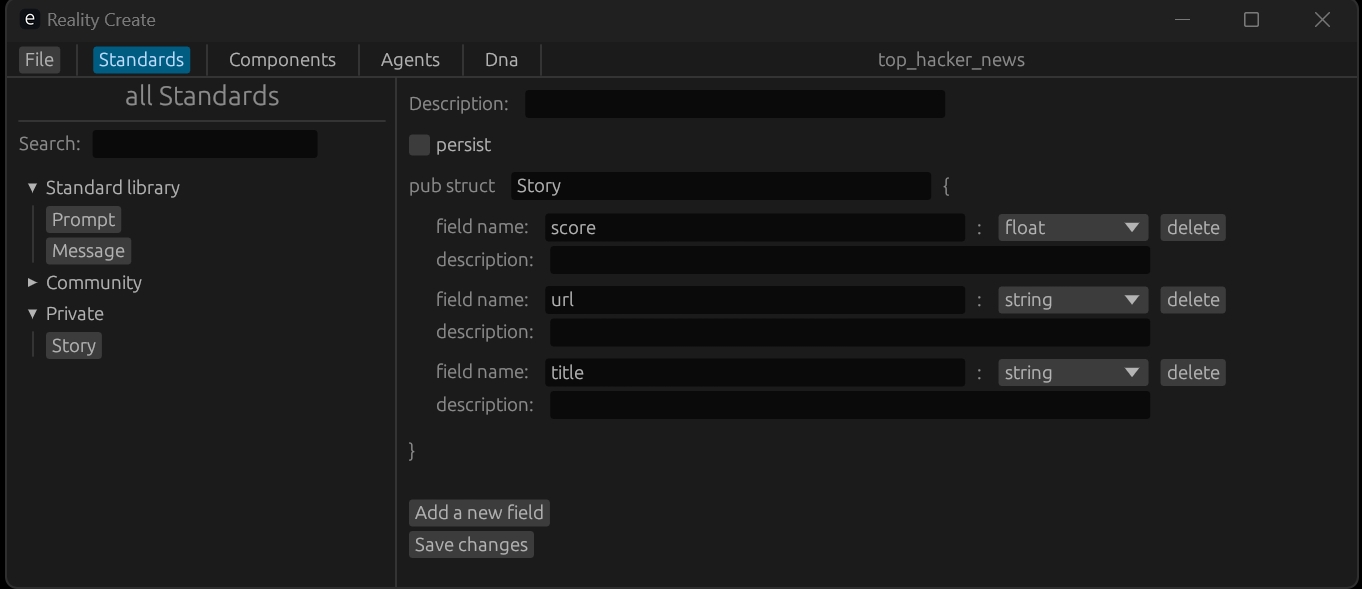Features and benefits
以下是Cogine的一些主要特性,更详细的介绍参见技术文档
| Name | Description | LangChain | Chidori | Cogine |
|---|---|---|---|---|
| Decentralized data | User's data are stored outside of the application and user controls its access permission from the applications | |||
| Interoperability | One agent can interoperate with any others even it is not developed by a same developer | limited to agents developed by a same developer and need to call API manually | limited to agents developed by a same developer and need to call API manually | |
| Multi-agent collaboration | Has standard collaborating mechanism between User, System and Agents | No standard mechanism and need to communicate case by case, also limited to a same developer | No standard mechanism and need to communicate case by case, also limited to a same developer | |
| Function/Agent-level sand-boxing | Every agent and even a function can be isolated so that multi agents come from different can be running in a same memory environment safely | |||
| Conversational computing | Code can talk to user, system or other agents to ask more information at any function location, the agent will be paused and continue to run when got response. | |||
| Logic-abstraction | We re-organized the whole program to make developers focused on logic of busniess and forget about the hardware, data and programing language abstraction. | |||
| Visual graph editing | We build a graph interaction which is as simple as Houdini and as powerful as any turning completed programming language. | |||
| Agent format standard | We defined a agent format standard to represent a turing completed agent program which can be loaded and runned dynamically so everyone can develop an agent to handle personal needs. | some runtime in-memory agent object | some runtime in-memory agent object | |
| Virtual machine & Dynamical loading and running | Can load and run dynamically |
与 LangChain 和 Chidori 在开发体验上的比较
基本上,在使用其它框架的时候,用户必须要全面学习Python,关注程序的结构,以及这些框架本身定义的各种复杂的类及其复杂的继承关系,然后使用这些特定的架构规则构建程序。 使用Cogine,你唯一需要关心的就是逻辑本身, 没有太多软件构造方面的负担。
- Cogine
- LangChain
- Chidori
First define a Story struct with editor:

Then define your component's input and output using the above defined struct also with editor:

Then define your logic flow:

Finally write your component's code with Lua:
fetch_top_hn.lua:
function updating()
local story_ids = get_url("https://hacker-news.firebaseio.com/v0/topstories.json?print=pretty")
for i = 1, #story_ids do
local url = string.format("https://hacker-news.firebaseio.com/v0/item/%s.json?print=pretty", story_ids[i])
stories[i] = get_url(url)
end
end
interpret_the_group.lua:
function updating()
local prompt = string.format("Based on the following list of HackerNews threads, filter this list to only launches of new AI projects: %s", table_to_string(stories))
local result = chat_completions("Please only return the result list as a RFC8259 compliant JSON format with no '\' character, no extra information", prompt)
if result["ok"] == true then
for i = 1, #result["content"] do
local story = {}
out_stories[i] = result["content"][i]
end
end
end
format_and_rank.lua:
function updating()
local prompt = string.format("this list of new AI projects in markdown, ranking the most interesting projects from most interesting to least. %s", table_to_string(stories))
local result = chat_completions("Please only return the result list as a RFC8259 compliant JSON format with no '\' character, no extra information",prompt)
local msg = "The news with AI topics are:\n"
if result["ok"] == true then
for i = 1, #result["content"] do
msg = string.format("%s%d. %s\n",msg,i,result["content"][i]["title"])
end
end
message["content"] = msg
message["receiver"] = "user"
end
import aiohttp
import asyncio
from typing import List, Optional
import json
from chidori import Chidori, GraphBuilder
class Story:
def __init__(self, title: str, url: Optional[str], score: Optional[float]):
self.title = title
self.url = url
self.score = score
HN_URL_TOP_STORIES = "https://hacker-news.firebaseio.com/v0/topstories.json?print=pretty"
async def fetch_story(session, id):
async with session.get(f"https://hacker-news.firebaseio.com/v0/item/{id}.json?print=pretty") as response:
return await response.json()
async def fetch_hn() -> List[Story]:
async with aiohttp.ClientSession() as session:
async with session.get(HN_URL_TOP_STORIES) as response:
story_ids = await response.json()
tasks = []
for id in story_ids[:30]: # Limit to 30 stories
tasks.append(fetch_story(session, id))
stories = await asyncio.gather(*tasks)
stories_out = []
for story in stories:
story_dict = {k: story.get(k, None) for k in ('title', 'url', 'score')}
stories_out.append(Story(**story_dict))
return stories_out
# ^^^^^^^^^^^^^^^^^^^^^^^^^^^
# Methods for fetching hacker news posts via api
class ChidoriWorker:
def __init__(self):
self.c = Chidori("0", "http://localhost:9800")
async def build_graph(self):
g = GraphBuilder()
# Create a custom node, we will implement our
# own handler for this node type
h = await g.custom_node(
name="FetchTopHN",
node_type_name="FetchTopHN",
output="{ output: String }"
)
# A prompt node, pulling in the value of the output from FetchTopHN
# and templating that into the prompt for GPT3.5
h_interpret = await g.prompt_node(
name="InterpretTheGroup",
template="""
Based on the following list of HackerNews threads,
filter this list to only launches of new AI projects: {{FetchTopHN.output}}
"""
)
await h_interpret.run_when(g, h)
h_format_and_rank = await g.prompt_node(
name="FormatAndRank",
template="""
Format this list of new AI projects in markdown, ranking the most
interesting projects from most interesting to least.
{{InterpretTheGroup.promptResult}}
"""
)
await h_format_and_rank.run_when(g, h_interpret)
# Commit the graph, this pushes the configured graph
# to our durable execution runtime.
await g.commit(self.c, 0)
async def run(self):
# Construct the agent graph
await self.build_graph()
# Start graph execution from the root
await self.c.play(0, 0)
# Run the node execution loop
await self.c.run_custom_node_loop()
async def handle_fetch_hn(node_will_exec):
stories = await fetch_hn()
result = {"output": json.dumps([story.__dict__ for story in stories])}
return result
async def main():
w = ChidoriWorker()
await w.c.start_server(":memory:")
await w.c.register_custom_node_handle("FetchTopHN", handle_fetch_hn)
await w.run()
if __name__ == "__main__":
asyncio.run(main())